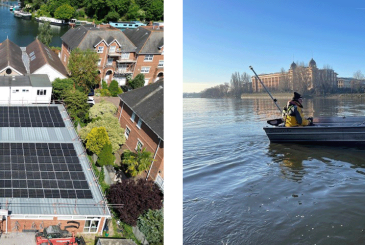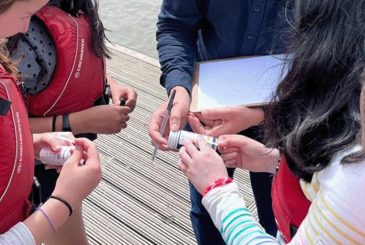You can’t control the river, but there are lots of things clubs can do to minimise the damage caused by a boathouse flood and to help you get back into the boathouse and on the water as quickly as possible once it’s safe to do so.
The first step is to ensure you have a flood risk assessment and safety plan specific to your club in place, and to make sure all relevant committee members, coaches and club members are familiar with it. This means you probably need to send it out every year. A good time to do this is when the first floods are forecast, as people will be looking for this information at that point.
The following information can be used when formulating a risk assessment and preparing plans to help clubs cope should flooding occur.
Forewarned is forearmed
Although lots of people will probably be monitoring conditions, it’s a good idea for everyone to be clear who within the club is responsible for monitoring local conditions and co-ordinating action. This will probably be the Club Safety Adviser.
Make sure you know the websites that provide online information about stream conditions and flooding. These websites are good starting points (do let us know about others that you find helpful in your area):
- Check for flooding in England
- Environment Agency river conditions for the Thames, Medway and Anglian Waterways
- GaugeMap – river levels and flow rates across the UK
- Canal and River Trust Waterways and Strong Stream Warnings
- Port of London Authority Flag Warnings
Some of these allow you to register for email or text notifications when a flood warning is issue and you can follow some on social media.
Tips for preparing your boathouse for a flood
Here are some things you can do if flood is forecast in your area:
- Sandbag the doors.
- Move boats on lower racks and other equipment stored on the floor out of the boathouse to higher ground or put them on trestles in the boathouse.
- Remove riggers from any boats that have to remain on lower racks to limit damage when the water subsides if they have float off. NB Tying boats down to racks can be helpful, depending on the height the water gets to, but it can also badly damage a submerged hull that’s being pushed upwards by flood waters.
- Make sure rubbish bins are secure, so they don’t float around and cause damage.
- Isolate the electrical water supply and gas supplies.
- Remove launches from the water and store them on higher ground. If this is not possible then secure launches so they raise evenly with the water level.
- Remove engines or make sure the propeller is in the raised position so flood debris does not get trapped.
- Move petrol cans and fuel tanks to higher ground.
- Remove any foodstuffs (bar snacks, kitchen stocks etc) from the ground floor.










